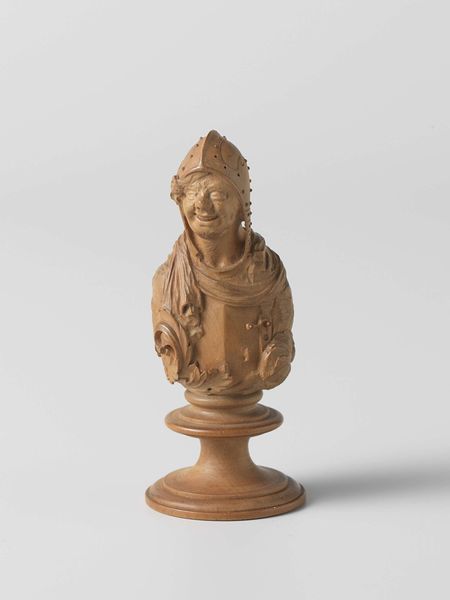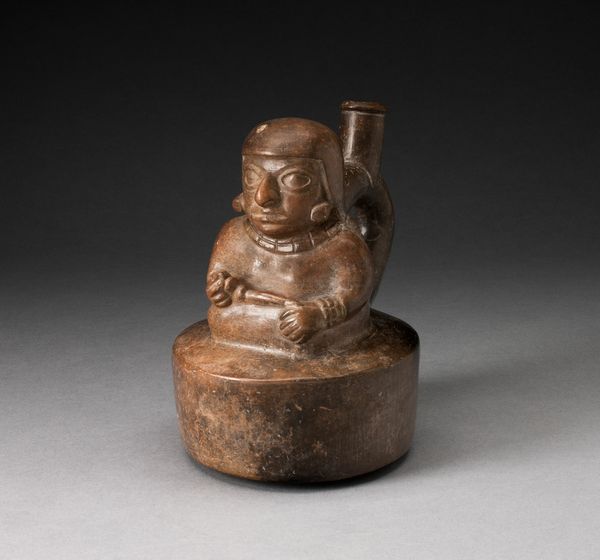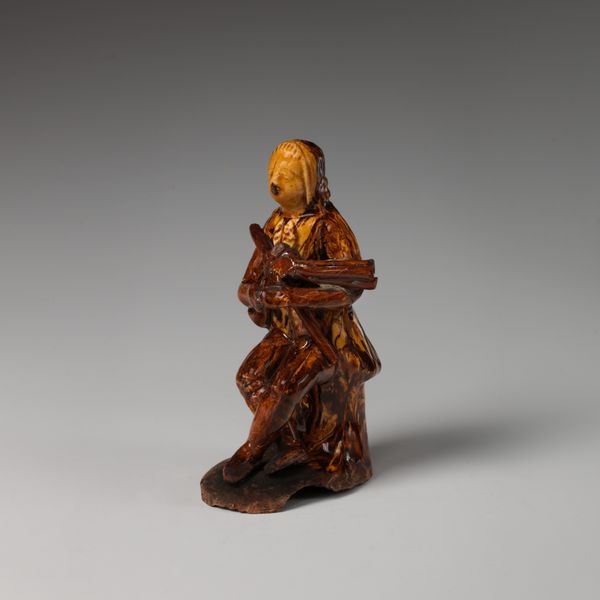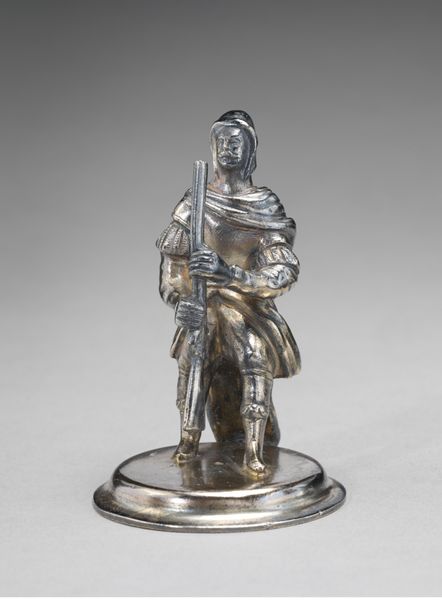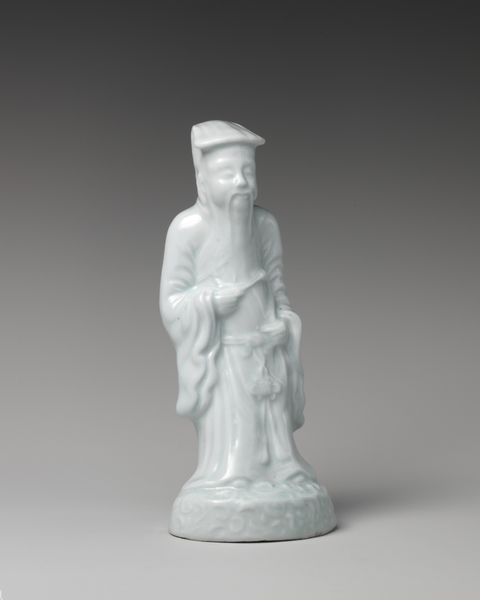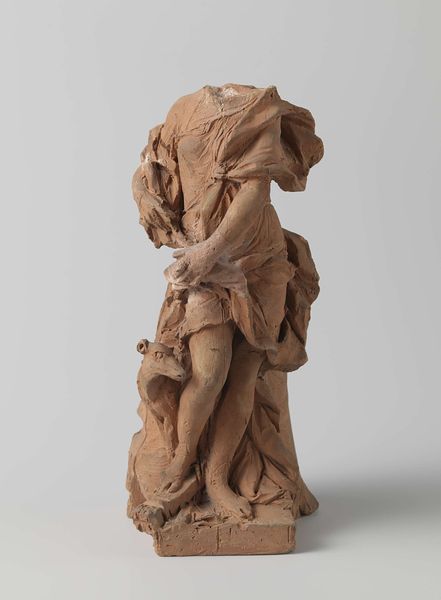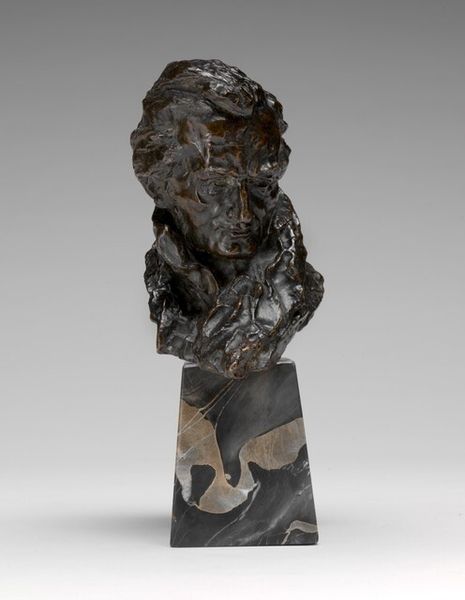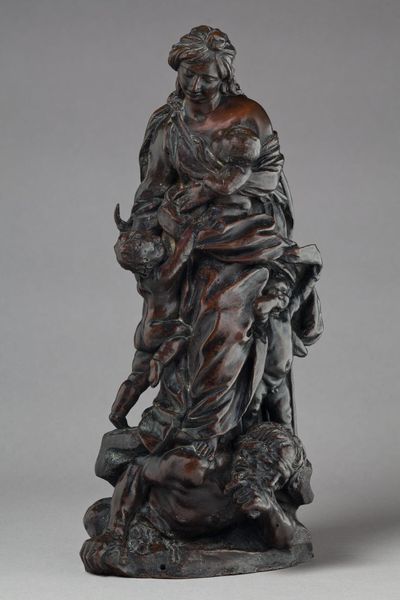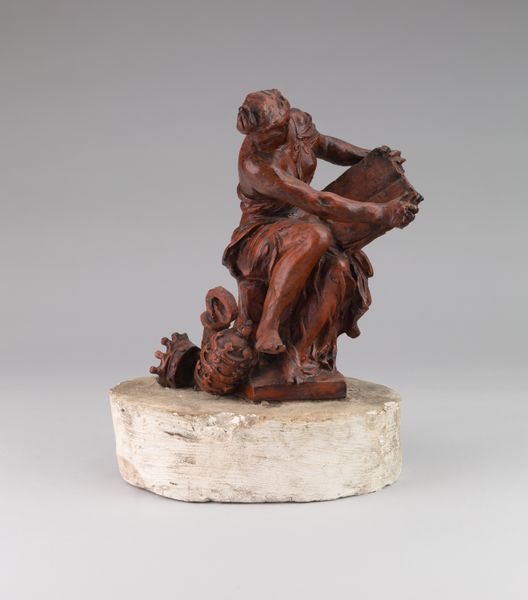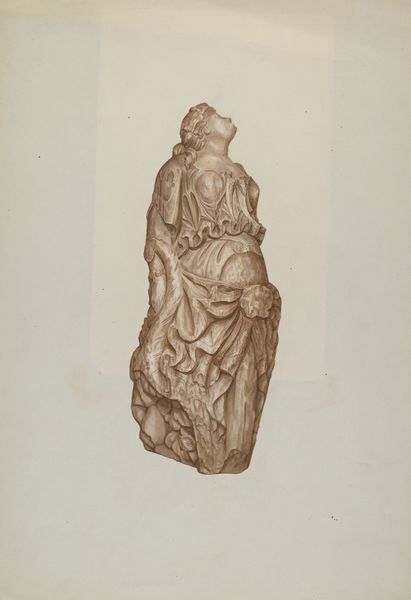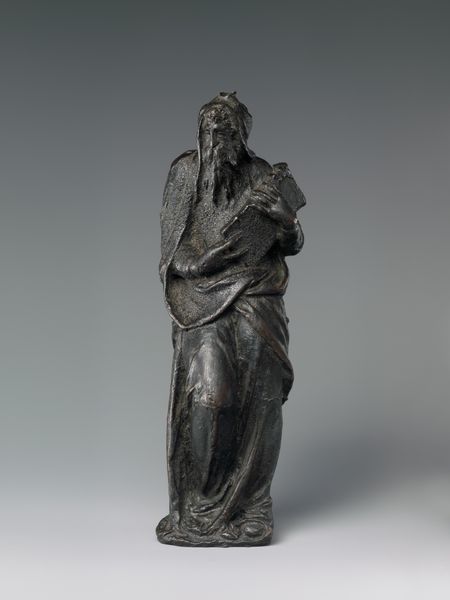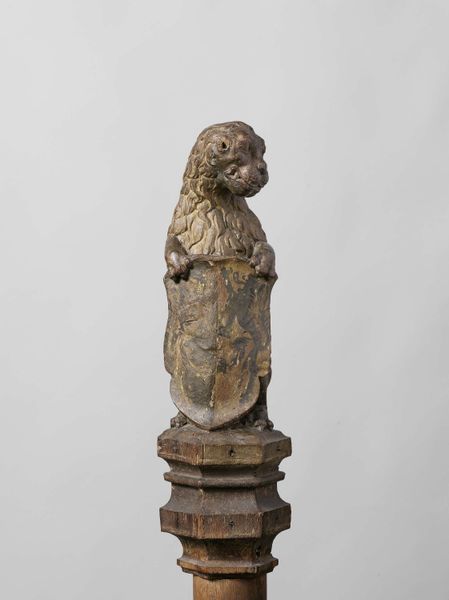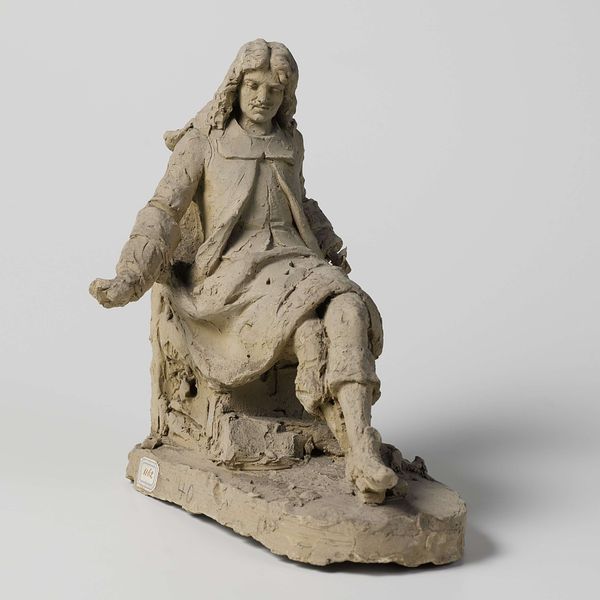
Netsuke of Man and Two Children with a Sambaso Dancer Puppet 19th century
0:00
0:00
carving, sculpture, wood
#
carving
#
sculpture
#
asian-art
#
japan
#
figuration
#
child
#
sculpture
#
men
#
wood
#
miniature
Dimensions: H. 1 5/8 in. (4.1 cm); W. 1 in. (2.5 cm)
Copyright: Public Domain
Curator: Looking at this ivory netsuke carving, "Man and Two Children with a Sambaso Dancer Puppet," made in 19th-century Japan, the craftsmanship immediately strikes me. What's your take on it? Editor: I see an everyday scene imbued with the theatrical. A celebration of labor, parenthood, performance. The surface seems worn and polished; there’s a smoothness from frequent handling, I would guess. Curator: Indeed. These miniature sculptures, created by artists such as Masahide, functioned as toggles for securing pouches or containers to kimonos, becoming integral to daily life. Think about how that dictated its subject matter—often figures or scenes accessible across social strata. Editor: Exactly. The labor of creating, but also the labor implied in its use, is what grabs me. The meticulousness, carving each minute detail from wood, shaping form, the carving is secondary only to its purpose: holding items as they work, live, breathe and build this thing they call culture. It speaks volumes about material necessity. Curator: Absolutely, and note the interplay of social hierarchies embodied by the figure. A man, likely a merchant, engages with the simple joys of his children, bringing in aspects of theatre as popular entertainment. The puppet suggests the blurring of societal expectations, reflecting common ground within class dynamics. Editor: I'm also curious about the economic implications. The resources needed for its production: skill and material availability shape access and affordability, telling a subtle history of 19th-century commerce and social mobility, doesn’t it? Curator: Very astute observation. It adds another dimension, questioning assumptions about artistic intention while bringing it back into the sphere of socio-economic conditions that made such delicate craft viable in its era. Editor: In closing, a humble yet quietly potent object reminding us that even the smallest artefact contains worlds of information. Curator: I agree, highlighting the threads of shared humanity interwoven with social constructs, immortalized in carved miniature forms.
Comments
No comments
Be the first to comment and join the conversation on the ultimate creative platform.

